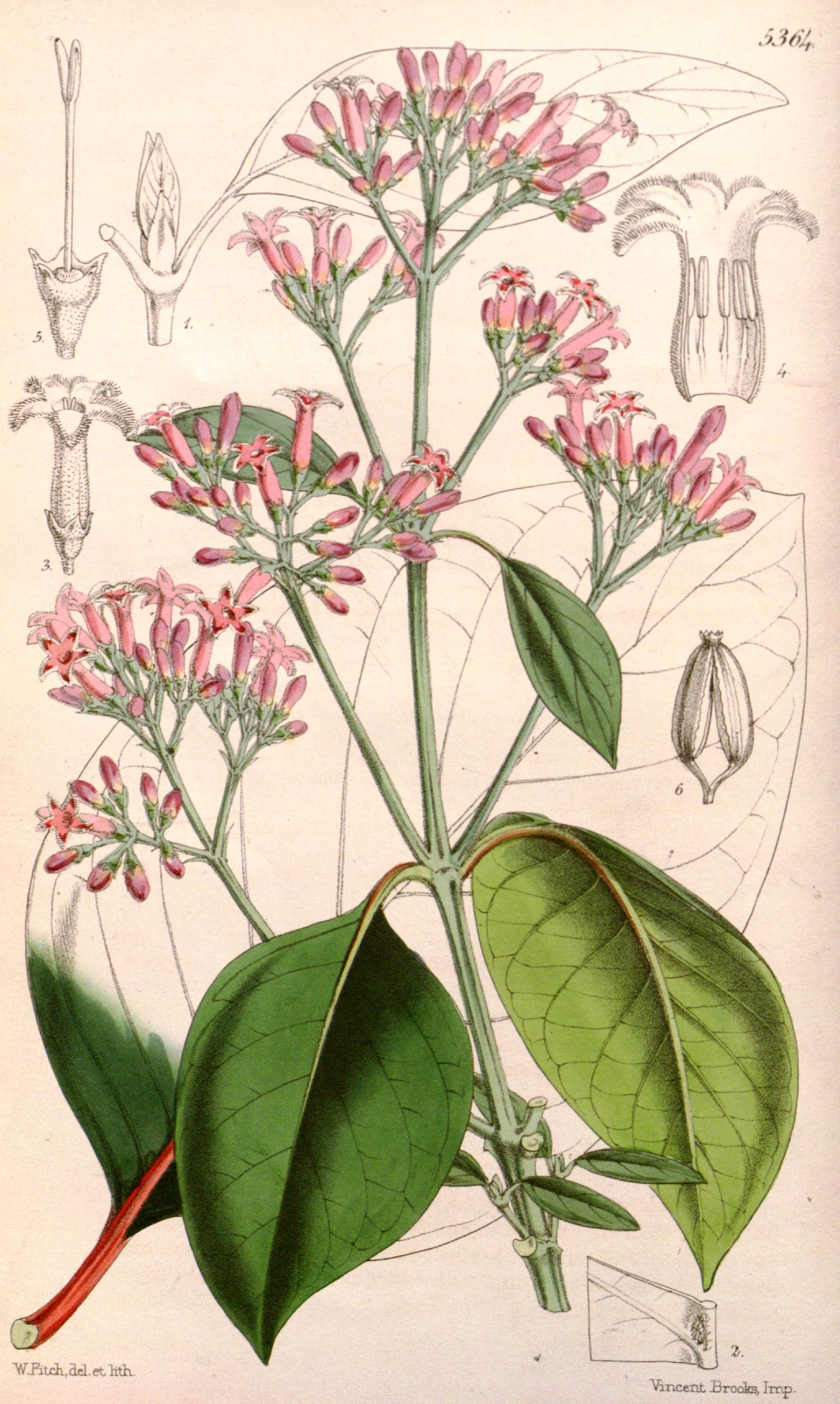Cinchona officinalis
Cinchona officinalis
Cinchona officinale or Lojabark (Cinchona officinalis L.) is an arboreal species belonging to the Rubiaceae family.
Systematics –
from the systematic point of view it belongs to the Eukaryota Domain, Kingdom Plantae, Magnoliophyta Superdivision, Magnoliopsida Class, Rubiales Order, Rubiaceae Family and therefore to the Cinchona Genus and to the C. officinalis Species.
The terms are synonymous:
– Cascarilla officinalis (L.) Ruiz;
– Cinchona academica Guibourt;
– Cinchona chahuarguera Pav .;
– Cinchona coccinea Pav. ex DC .;
– Cinchona colored Lamb;
– Cinchona condaminea Bonpl .;
– Cinchona condaminea var. chahuarguera Pav. ex DC .;
– Cinchona condaminea var. lanceolata Wedd .;
– Cinchona condaminea var. true Wedd .;
– Cinchona crispa Tafalla ex Howard .;
– Cinchona lanceolata Ruiz & Pav .;
– Cinchona lancifolia var. lanceolata Roem. & Schult .;
– Cinchona legitima Ruiz ex Lamb .;
– Cinchona lucumifolia var. stupea Wedd .;
– Cinchona macrocalyx var. obtusifolia Pavón ex DC .;
– Cinchona macrocalyx var. uritusinga Pav. ex DC .;
– Cinchona obtusifolia Pav. ex DC .;
– Cinchona officinalis var. bonplandiana-colored Howard;
– Cinchona officinalis var. bonplandiana-lutea Howard;
– Cinchona officinalis var. condaminea (Bonpl.) Howard;
– Cinchona officinalis var. crispa (Tafalla ex Howard) Howard;
– Cinchona officinalis var. uritusinga (Pad. ex DC.) Howard;
– Cinchona palton Pav .;
– Peruvian Cinchona Mutis;
– Cinchona suberosa Pav. Ex Howard;
– Cinchona uritusinga Pav. formerly Howard;
– Cinchona violacea Pav. formerly Howard;
– Cinchona weddelliana Kuntze;
– Hindsia subandina Krause;
– Quinquina officinalis (L.) Kuntze;
– Quinquina palton (Pad.) Kuntze;
Etymology –
The name Cinchona derives from Ana de Osorio, countess of Cinchon and wife of the viceroy of Peru, who according to legend discovered on herself the virtues of cinchona bark, recovering from malarial fevers and deciding to import it to Europe (1639). The specific epithet officinalis comes from a medieval laboratory workshop: plants usable in pharmaceuticals, herbal medicine, liquor, perfumery and the like.
Geographic Distribution and Habitat –
Cinchona officinalis is a plant native to the humid montane forests of Colombia, Ecuador, Peru and Bolivia.
Its habitat is that of cool and humid mountain areas, between 1600-3000 meters above sea level.
Description –
Cinchona officinalis is a plant in the form of an evergreen shrub or tree that grows between 6 and 20 meters.
The bark is wrinkled and the twigs are covered with tiny hairs.
The stipules are lanceolate or oblong, acute or obtuse, glabrous.
The leaves are lanceolate to elliptic or ovate, usually about 10 centimeters long and 3.5-4 centimeters wide, with a pointed, sharp or obtuse tip, rounded base, leathery, glabrous above and often shiny; below they are hairless or powdery especially on the veins.
The inflorescences are in terminal panicles, with multiple flowers; the calyx is reddish, hairless or almost, with triangular lobes; pink or red corolla, ovate, acute lobes, with the corolla tube about 1 cm long.
The fruit is an oblong capsule, 1,5–2 cm. in length, almost hairless.
Cultivation –
Cinchona officinalis is a plant of the humid tropics, where it is found at altitudes between 1,600 and 3,000 meters and grows best in areas where annual daytime temperatures are between 14 and 23 ° C, but can tolerate temperatures between 7 and 27 ° C.
This plant can’t stand temperatures of 7 ° C or lower.
It prefers an average annual rainfall of between 2,500 and 3,500 mm, but tolerates 1,400 – 4,000 mm.
It also requires a well-drained and humid soil and a position in full sun or partial shade.
It grows very poorly or not at all on soils that have been exposed to fire and prefers a pH between 5.5 and 6.3, tolerating values of 4.8 – 7.
Plants start flowering after 3 – 4 years and are uprooted and harvested after 8 – 12 years.
In commercial plantations, trees are given away when they are about 6 years old.
Customs and Traditions –
Lojabark has a long history of use by the natives, especially as a treatment for fevers and malaria. Modern research has shown that it is a very effective treatment for fever, and especially as a treatment and prevention of malaria. The bark contains various alkaloids, in particular quinine and quinidine. Up to 70 – 80% of the total alkaloids contained in the bark are composed of quinine.
The bark is bitter, astringent, tonic, lowers fever, relaxes spasms, is antimalarial (the quinine alkaloid) and slows the heart (the quinidine alkaloid).
The cortex is used internally in the treatment of malaria, neuralgia, muscle cramps and cardiac fibrillation. It is an ingredient in various patented cold and flu remedies. The liquid extract is useful as a cure for drunkenness. It is also used as a gargle to treat a sore throat.
However, high and too constant doses should be avoided, as they produce headache, dizziness and deafness.
Preparation Method –
The bark is made into tablets, liquid extracts, tinctures and powders. The alkaloid quinine extracted from the bark is used in hair oils and shampoos, tanning oils, insecticides and as a vulcanizing agent.
In the right dose it is also used to make drinks fluorescent yellow.
Guido Bissanti
Sources
– Acta Plantarum – Flora of the Italian Regions.
– Wikipedia, the free encyclopedia.
– Useful Tropical Plants Database.
– Conti F., Abbate G., Alessandrini A., Blasi C. (edited by), 2005. An annotated checklist of the Italian vascular flora, Palombi Editore.
– Pignatti S., 1982. Flora of Italy, Edagricole, Bologna.
– Treben M., 2000. Health from the Lord’s Pharmacy, Advice and experiences with medicinal herbs, Ennsthaler Editore.
Warning: Pharmaceutical applications and alimurgical uses are indicated for informational purposes only, they do not represent in any way a medical prescription; we therefore decline all responsibility for their use for curative, aesthetic or food purposes.


